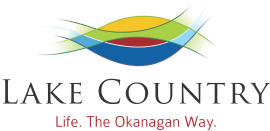Report operational water concerns (i.e. water leak, meter, pressure)
For urgent, after hours, matters contact 250 869 5904
In the case of immediate danger call 911.
The District of Lake Country collects and treats wastewater from 3,195 sanitary sewer service equivalents. This means the total volume of wastewater collected and treated from all residential, commercial and institutional facilities is equivalent to that of 3,915 single-family dwellings.
Wastewater is treated to protect our environment and public health. The District treats wastewater to meet the strict standards set by the province before releasing into the environment through ground disposal systems. As part of our commitment to managing water wisely, we ensure that the water we borrow is safely treated and returned to the environment.
Annual Wastewater Reports
Septic Systems
The District of Lake Country does not regulate or maintain privately owned septic systems, as they are regulated by Interior Health. However, as part of a regional initiative, we work with the Regional District of Central Okanagan to provide education and awareness services to property owners.
The District encourages residents with onsite septic systems to visit the RDCO Septic Systems website for valuable information on installing and maintaining septic systems, as well as identifying signs of system failure.
For details about the approval process, certified designers and installation companies, and the care and maintenance of septic systems, please visit the Interior Health Onsite Sewage Systems webpage.
Think Before You Flush (Wastewater Source Control)
Substances with high nutrient or solid concentrations can disrupt the collection system and treatment process, leading to time-consuming and costly repairs. That is why its important to be mindful of what can be safely put down the drain and what might harm our shared system. The videos below provide great information on what residents can do to help us keep our system working.
Fats, Oils & Greases (FOG)
Pausing for a few seconds before pouring materials down the drain can go a long way in helping to protect our Okanagan drinking water sources and wastewater treatment infrastructure. This is especially true when it comes to FOG - or Fats, Oils and Greases as explained in this video from the Regional District of the Central Okanagan (RDCO):
Flushables
Have you ever wondered can I or should I flush this? This short video from the RDCO helps provide the answer in order to protect our Okanagan drinking water sources and wastewater treatment plant infrastructure.
What is Source Control?
What you put down the drain at home or work can ultimately affect the quality of our Okanagan drinking water sources and protect our wastewater treatment infrastructure. This short video explains what Source Control is, why it matters and what you can do about it.
